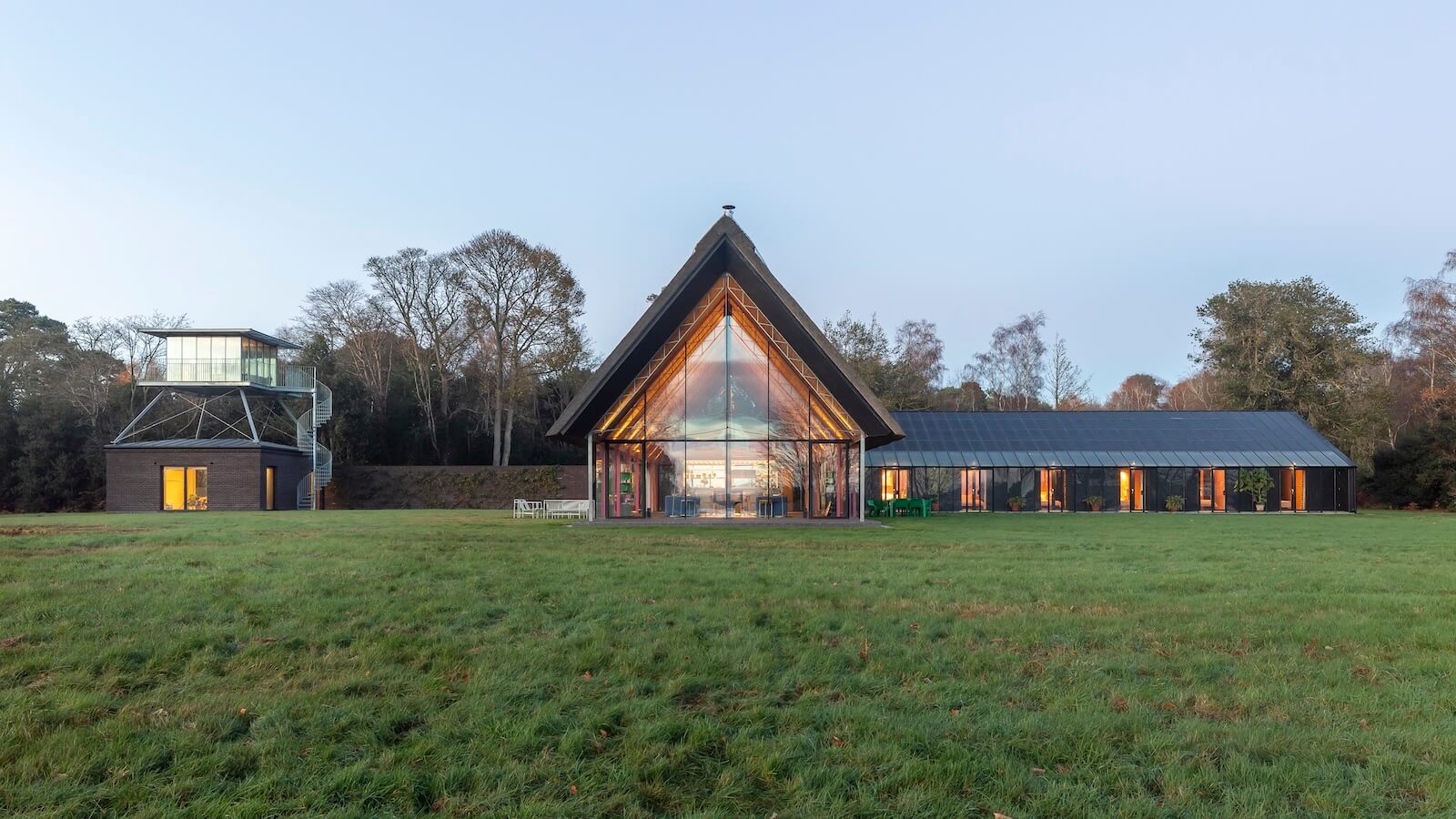
To go to Amir Sanei and Abigail Hopkins’s new home on a vast and historic estate in coastal Suffolk, you drive through wooded grounds and past Victorian buildings and structures, eventually arriving at an opening with a utilitarian shed and a dark brick wall featuring a “moon gate.” It is only once you have walked through this circular arch that the dwelling’s unique configuration — and the expansive and somewhat mystical landscape of heathland and marshy waters below — are revealed. Composed of four geometrically different, discrete and defined volumes arranged off a central courtyard, Housestead (as the home is called) is both strikingly contemporary and richly context-driven, offering a potential blueprint for contemporary rural living and building.
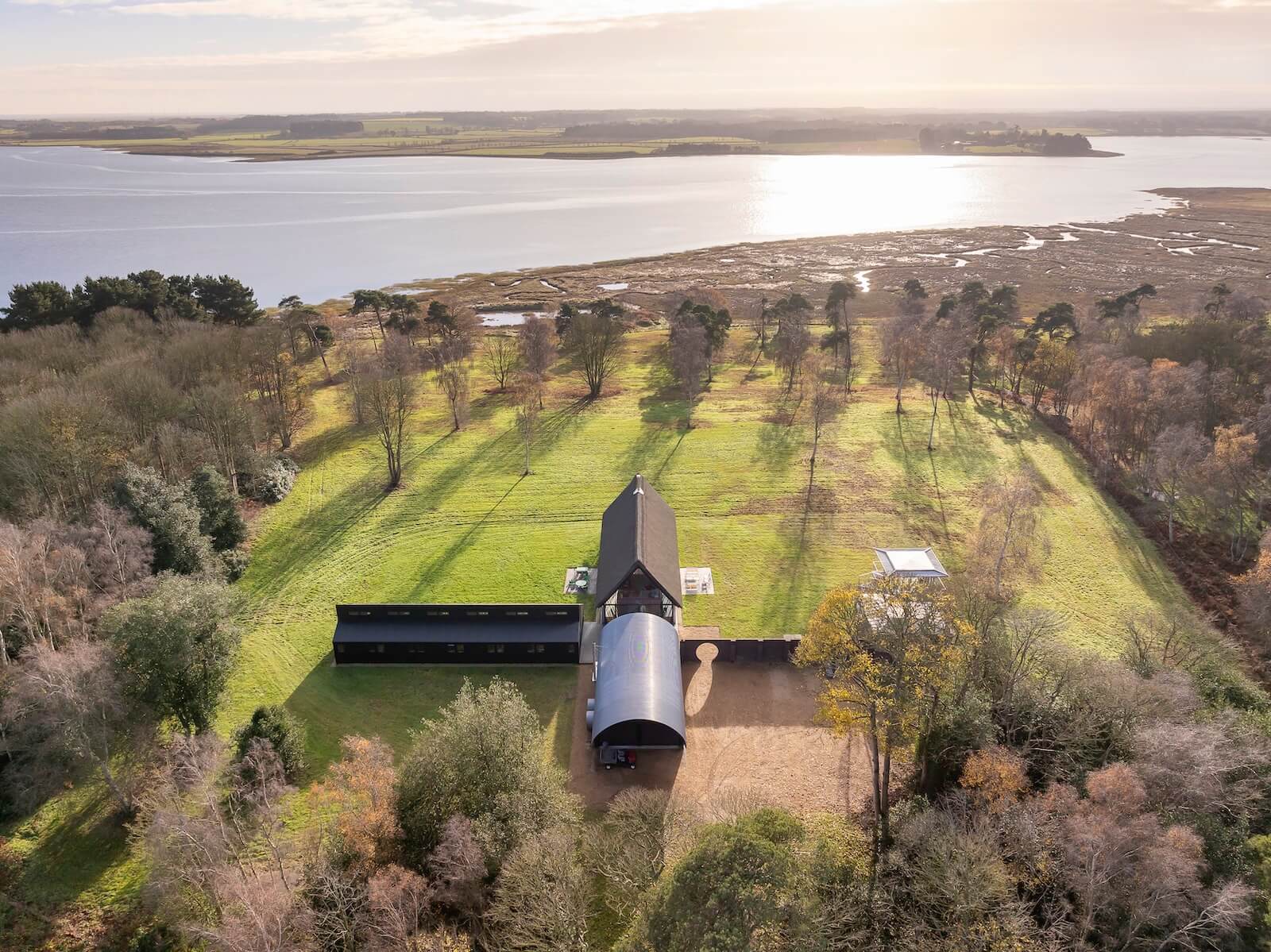
“Using the analogy of the farmstead, where every structure has a different function, we allocated different functions to each volume,” explains Amir Sanei, who co-founded London-based practice Sanei + Hopkins alongside his wife, Abigail. There’s the utility building with its curved and corrugated hangar-like roof, the single-storey sleeping quarters for their children, made of prefabricated structurally insulated panels and locally sourced larch, and the south-facing main “farmhouse,” with its wraparound windows topped by an overhanging pitched thatched roof that “gives the single-storey building presence,” explains Hopkins.
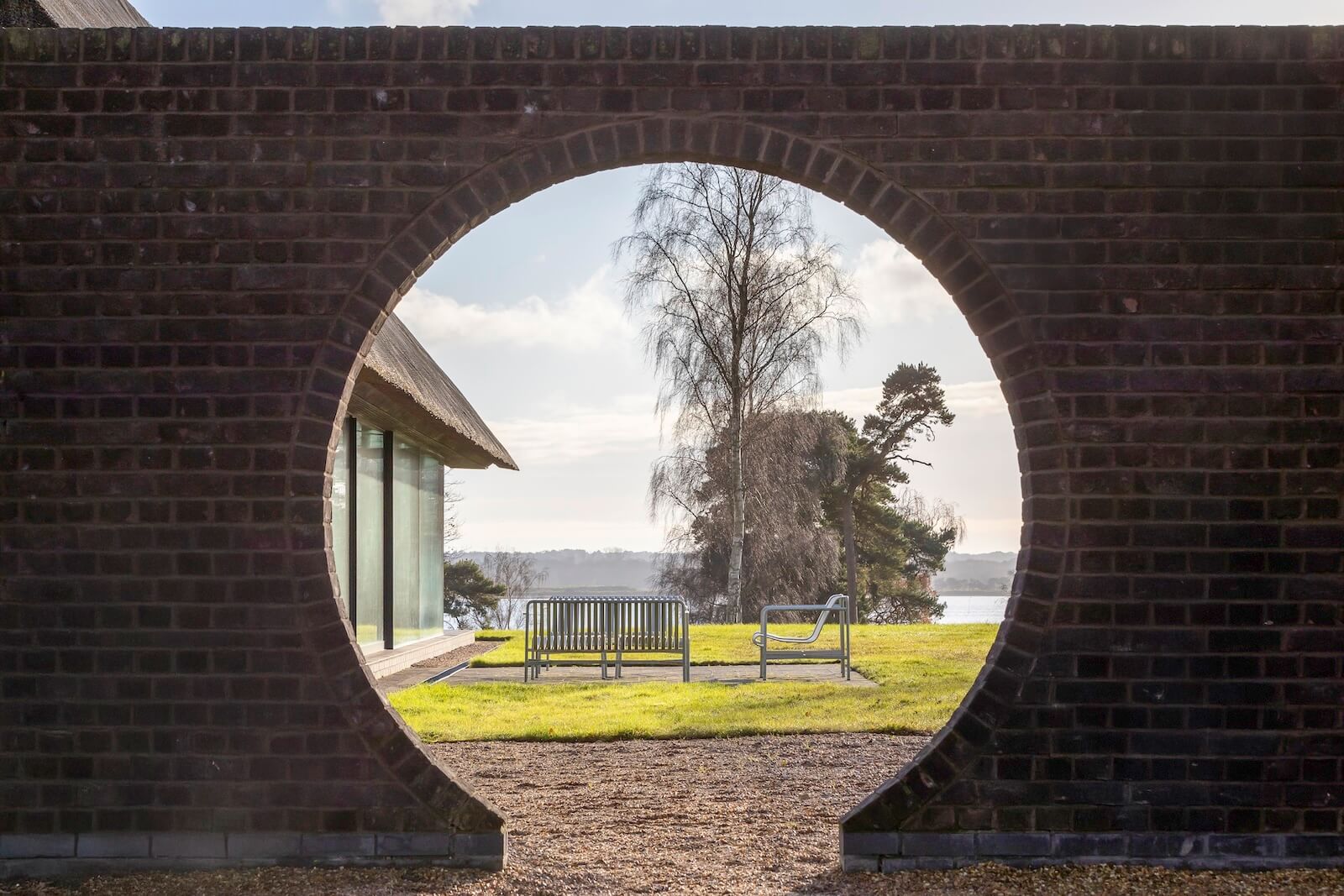
The fourth “object” is the couple’s main brick bedroom, above which they’ve perched a fully glazed elevated study that is accessed via a winding external steel staircase. These last two structures borrow from the geometric language of the wartime pillboxes and observation towers one finds in Suffolk, and the study also pays tribute to the water tower that once existed by the main house. It is also, importantly, “the one place where you can look at the amazing landscape from above,” Sanei says.
Creating a 21-metre-long thatched roof on top of a sleek contemporary structure grew out of a desire to reference local and agricultural architectural vernacular wherever possible on the project, and gently push boundaries in terms of ideas, material combinations and aesthetics. The so-called “living” block pays tribute to the 16th-century Suffolk long house, which was often a place where the community would meet, explains Hopkins.
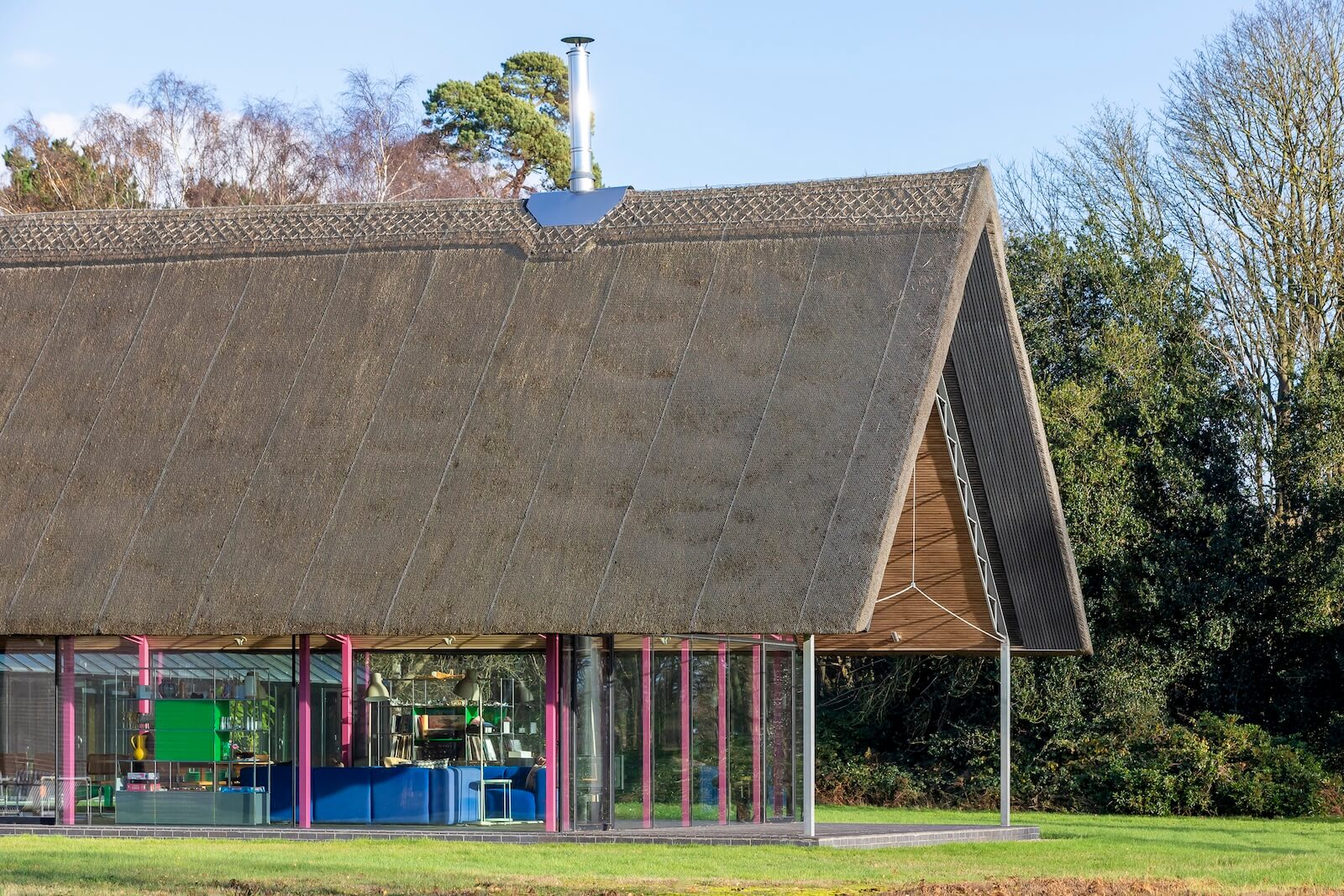
And the thatch is made the traditional Suffolk way, out of water reed from the local marshes rather than the more common straw. It also plays a part in the project’s un-shouty but nevertheless impressive sustainability credentials: By combining a 300-millimetre-thick thatch with insulation of approximately the same depth, the building achieved a U-value of 1.0, despite its glass facade. In the same vein, the east “sleeping block” roof is covered in PV panels, and its outer wall, clad in black-painted timber, looks out onto a glassed-in “winter garden,” creating a so-called Trombe wall effect where heat is captured and released into the space.
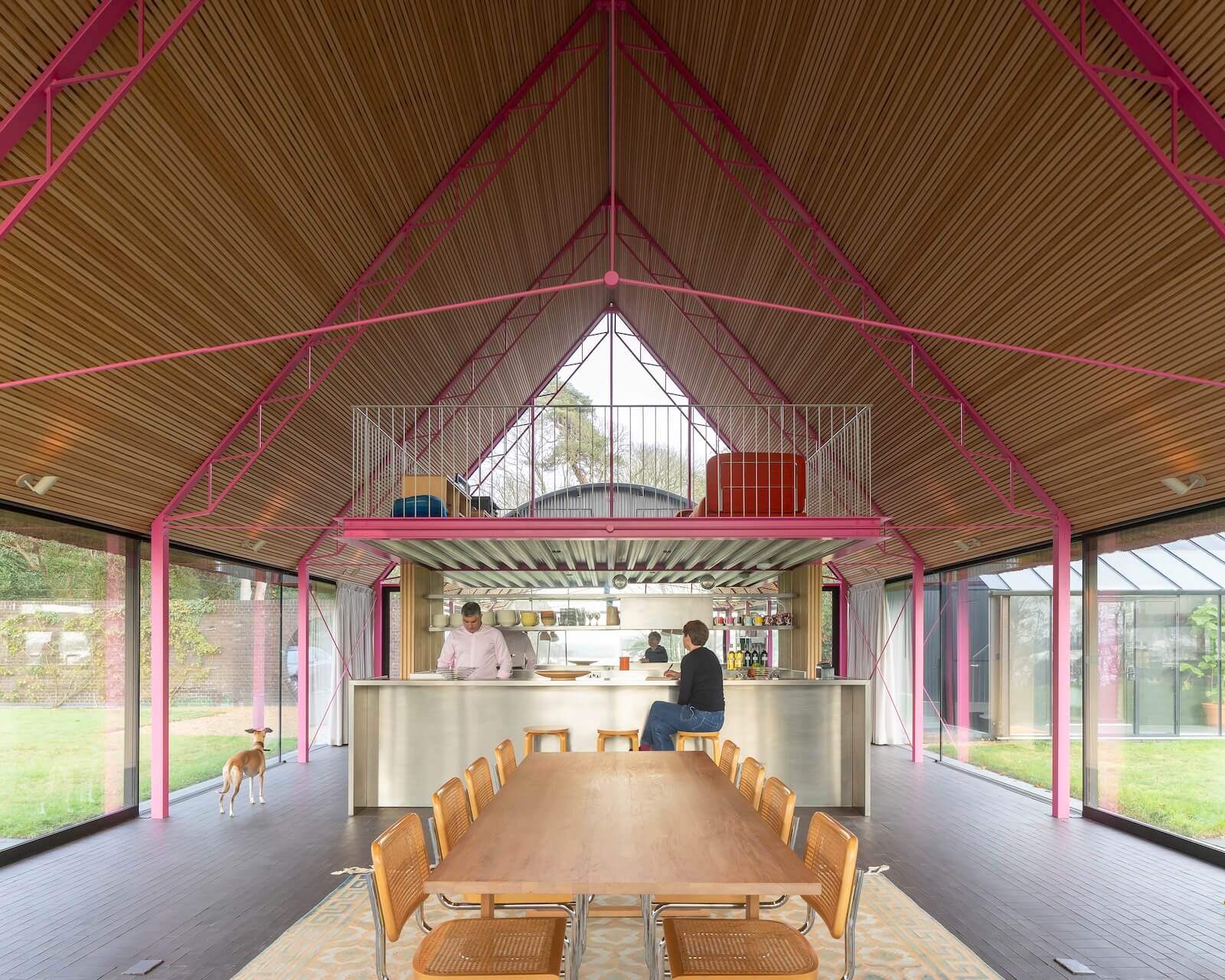
Sanei and Hopkins first got the idea for Housestead when they outgrew their two-bedroom annex cottage on this 160-hectare Suffolk estate, which Hopkins’s architect parents had purchased in the late 1990s. The plan was to move to a slightly larger building on the estate, Middle Lodge, but it was dilapidated and too small for the couple and their five children. Eventually, after batting around countless schemes for how to extend it, they decided to seek permission to demolish the original dwelling and replace it with a new, larger one.
In the end, however, the couple were encouraged by an enlightened conservation officer to keep Middle Lodge (it was later restored by Abigail’s mother) — and instead build something new and innovative elsewhere on the estate under a clause in planning policy known back then as Paragraph 55. More exciting than it sounds, this clause allows for the construction of new houses in the countryside where, among other things, the “exceptional quality or innovative nature of the design…helps to raise standards of design more generally in rural areas.”
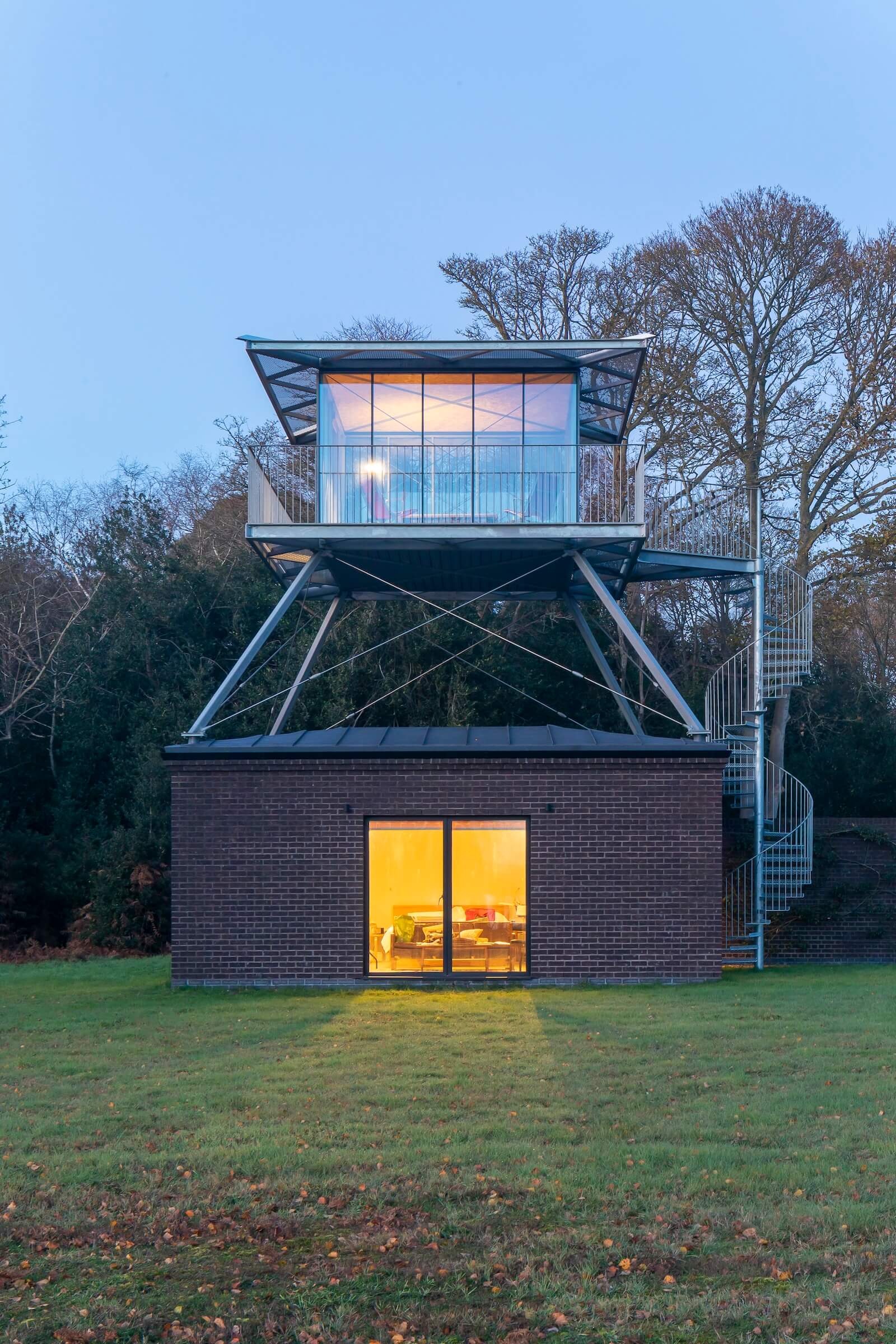
The layout and composition of the structures grew naturally from how the family lived and occupied various shelters around the estate. “We spent a lot of time in the courtyard opposite the annex we lived in, as well as in my parents’ home [in the estate’s main house] for meals, so we were constantly going from one building to another,” explains Hopkins, whose sister also lives on the property.
“When we came to thinking about how we would want to live, moving between different buildings and being outdoors a lot seemed very normal to us.” On farms, the buildings look inward in order to shelter animals and keep them safe; Sanei and Hopkins instead decided to turn everything outward toward the surrounding landscapes and orient the volumes to the path of the sun. Though sparing and rigorous in its language and materiality, there is also plenty of whimsy to be found in Housestead.
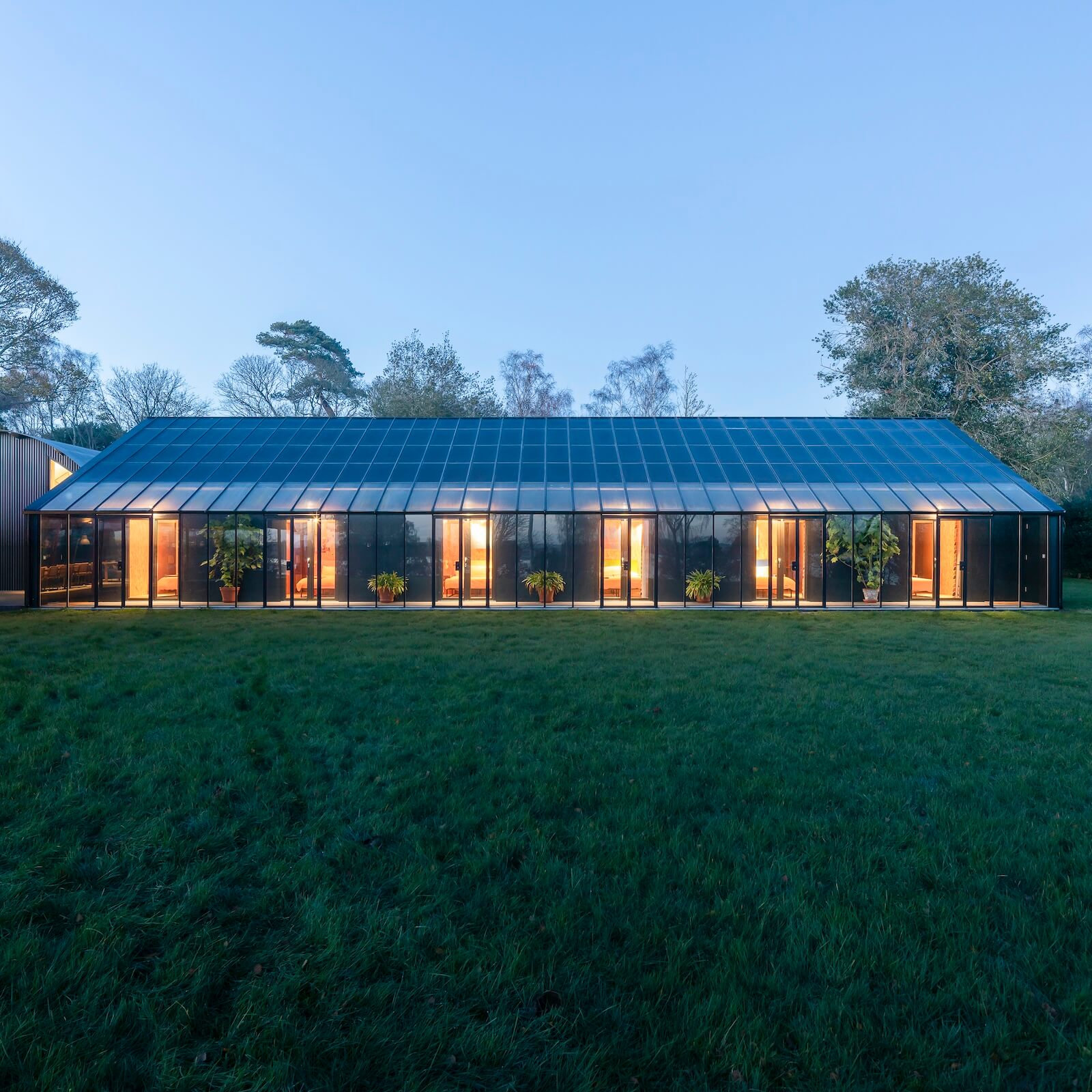
The living area, for instance, with its robust thatched roof and glazed walls, is supported by slim steel columns and trusses engineered down to their finest size to allow for uninterrupted views that bring the outside in. The trusses are painted bright pink in an upbeat nod to the “Suffolk pink” limewashed homes in the area, as well as the strong chromaticism of the high-tech genre pioneered by Hopkins Architects, the practice co-founded by Abigail’s parents in the ’70s. The moon gate entrance playfully frames the terrace and view to come while the utility shed features three circular firewood log stores made of corrugated galvanized steel sheets; the latter arrived on site in the wrong gauge and were later bent into shape by a local company that makes pigpens.
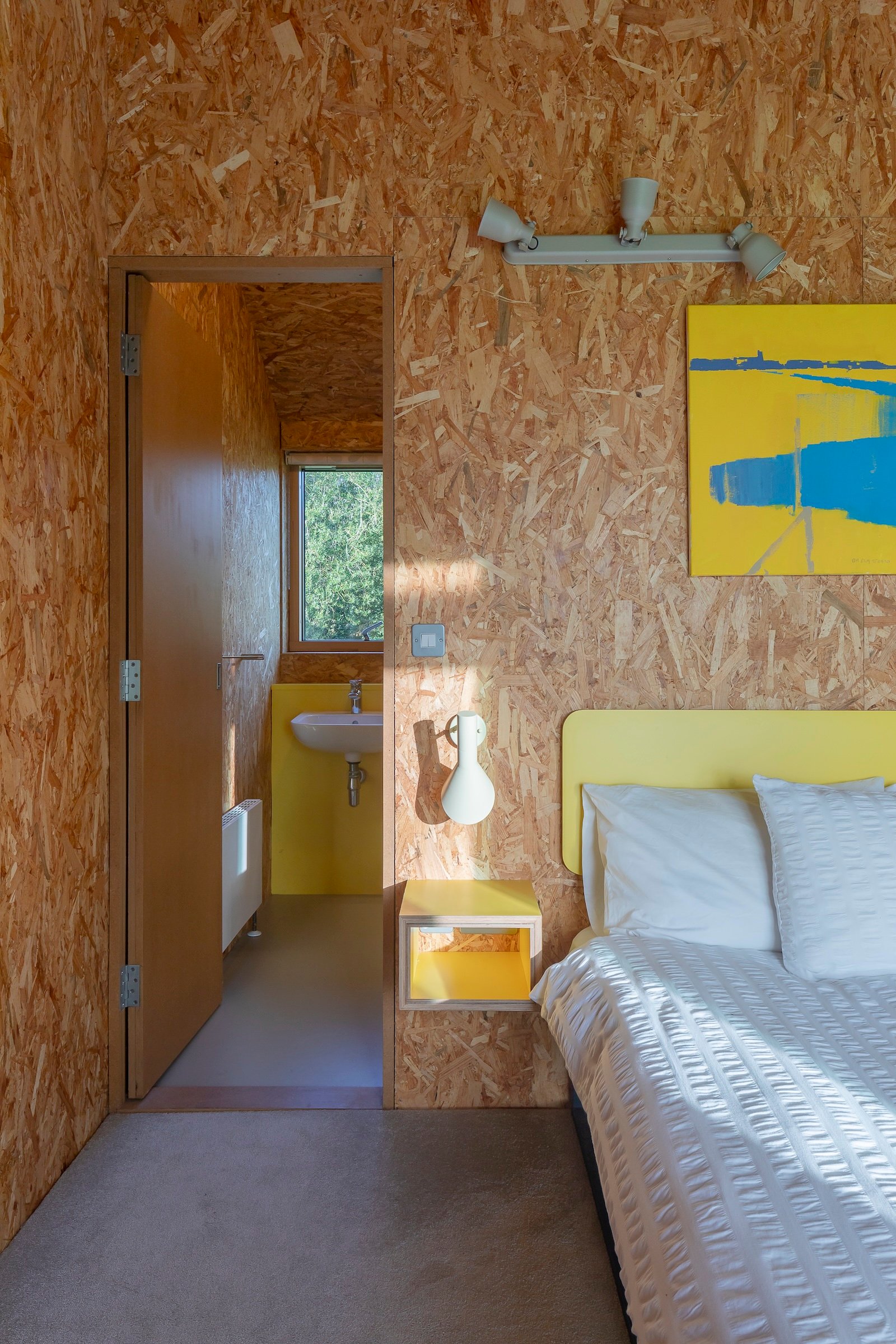
The study that floats above the brick west wing bedroom is the most unexpected and adventurous part of the project. “It’s something that initially you might have thought is a folly — and do we really need it?” acknowledges Sanei. “Now, it makes perfect sense.”
Like the other elements that make up Housestead, it has a geographical and architectural raison d’être, but also a seductive experimental quality.
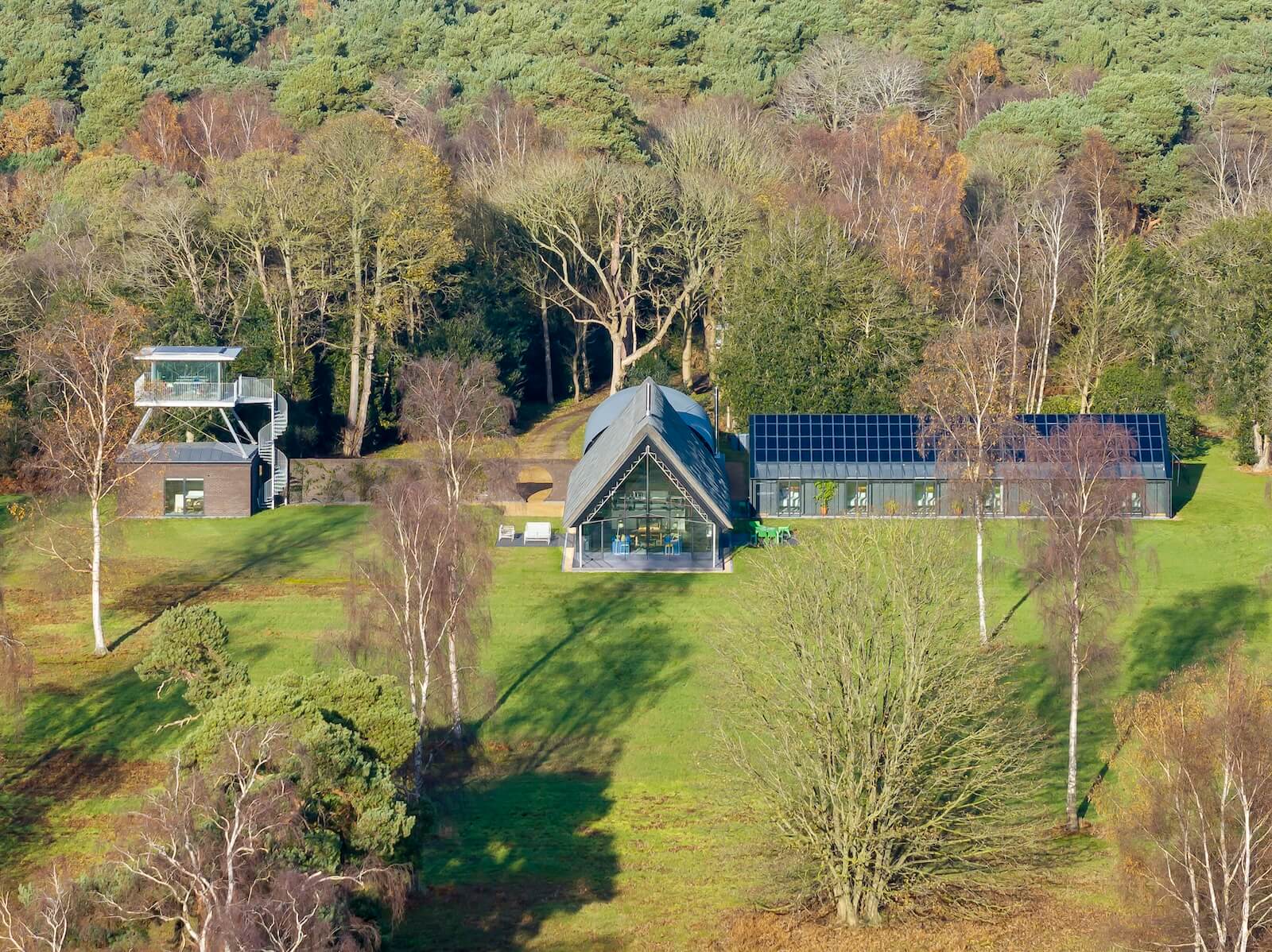
A “Housestead” in Suffolk, U.K., Merges a Thatched Roof with the Latest Green Tech
The founders of U.K. firm Sanei + Hopkins composed Housestead, their cruciform home in the Suffolk coastal heathland, by juxtaposing old and new, high-tech and agrarian. The result: a rural-living paradise
